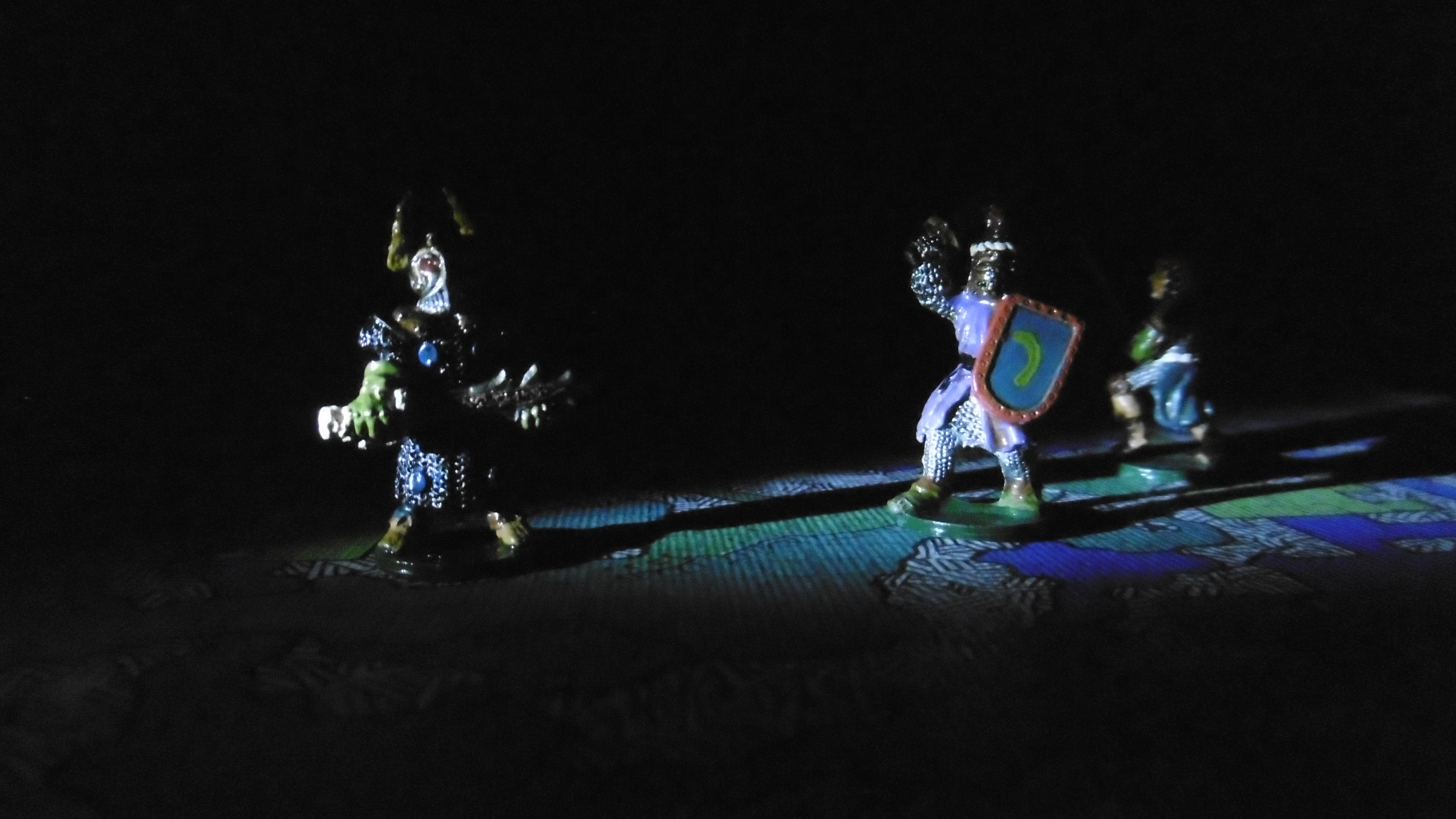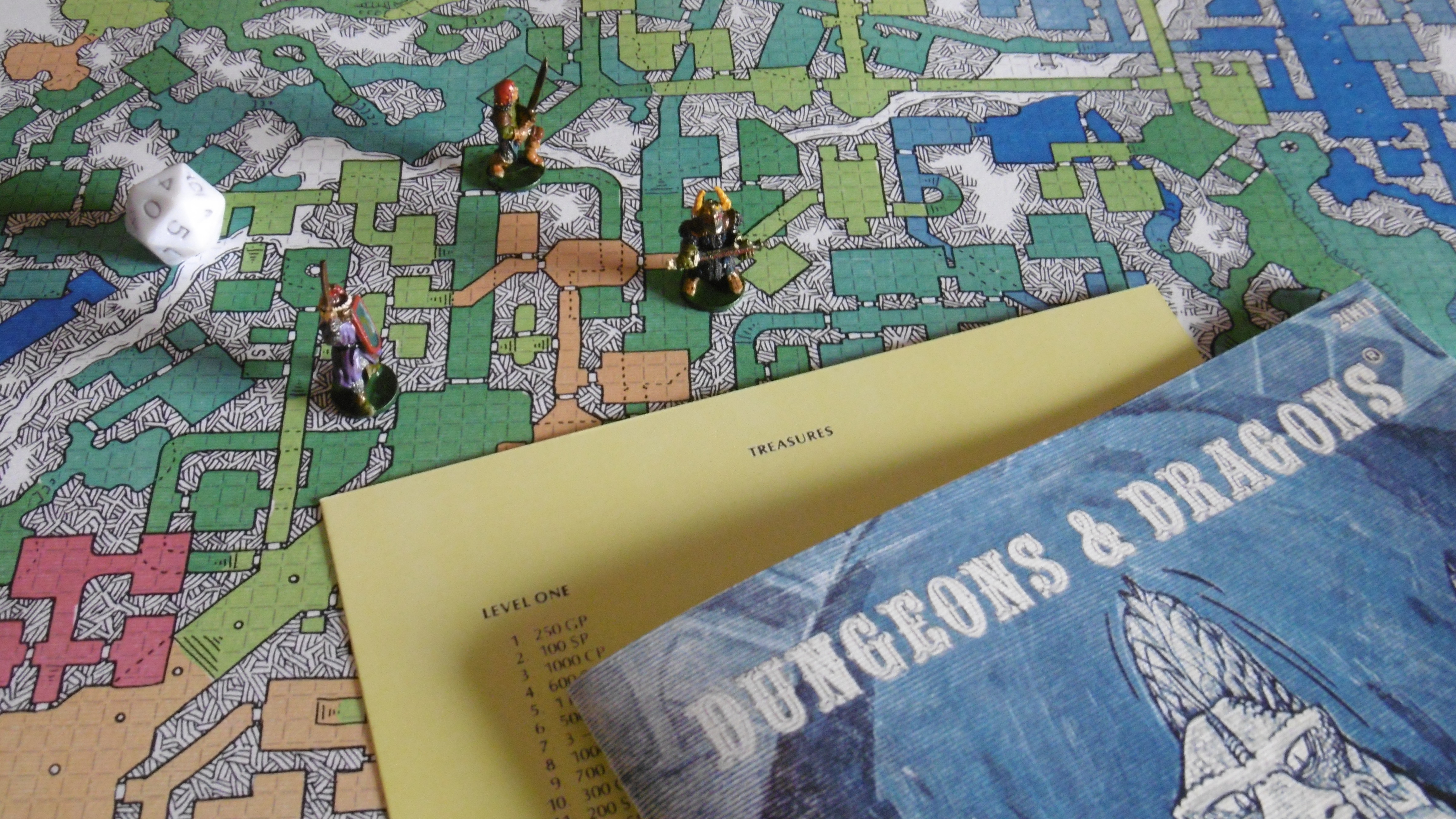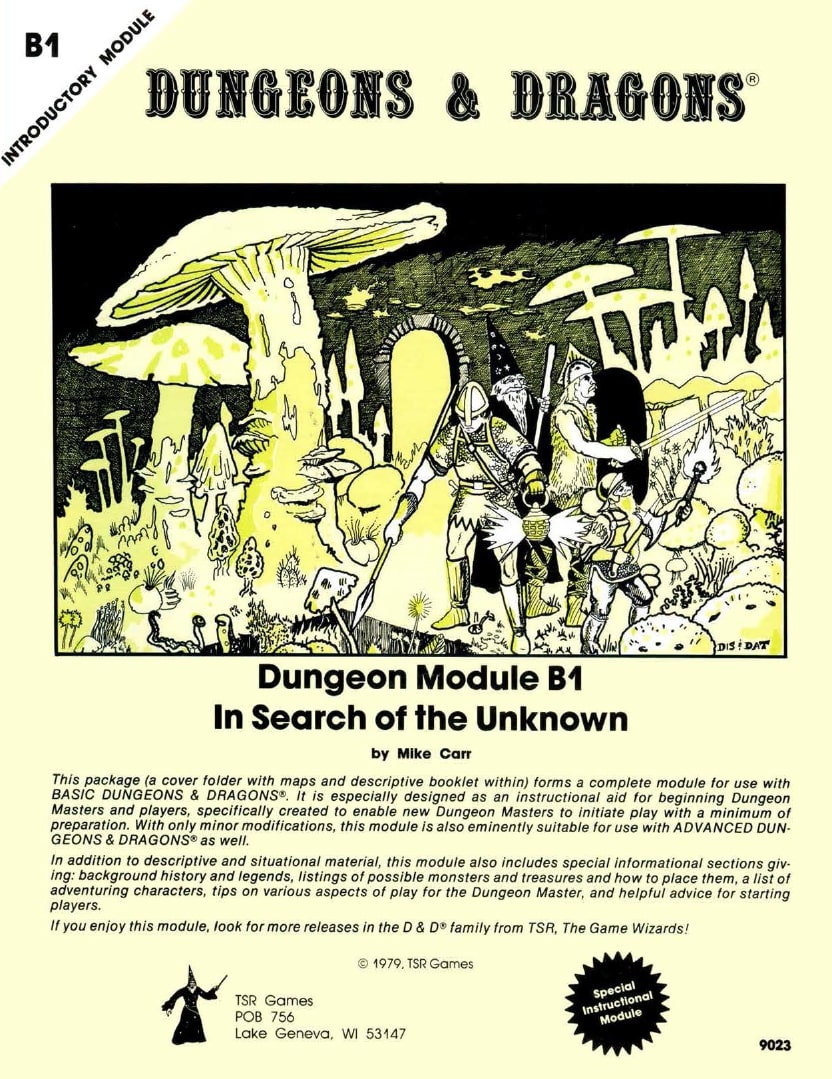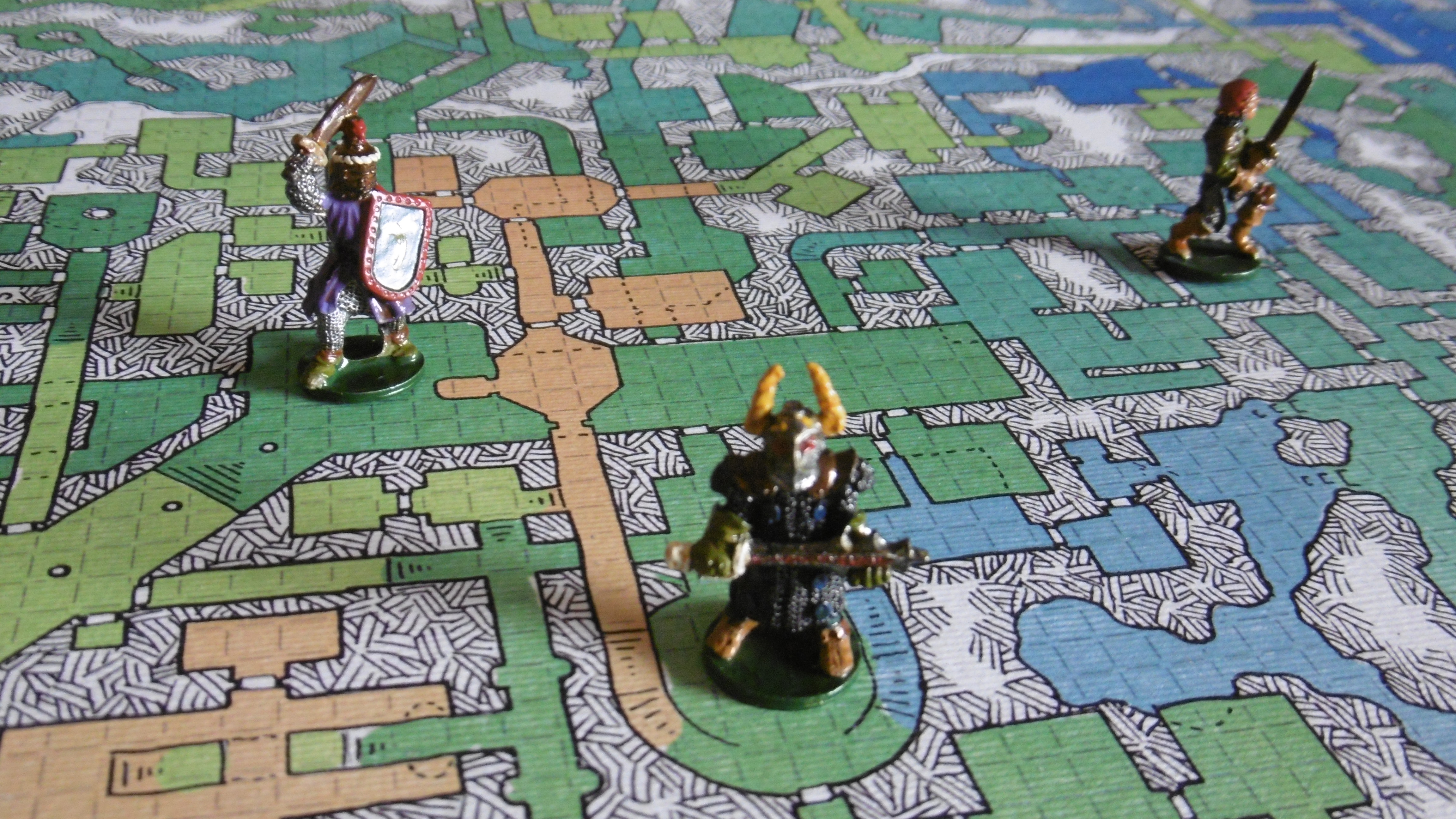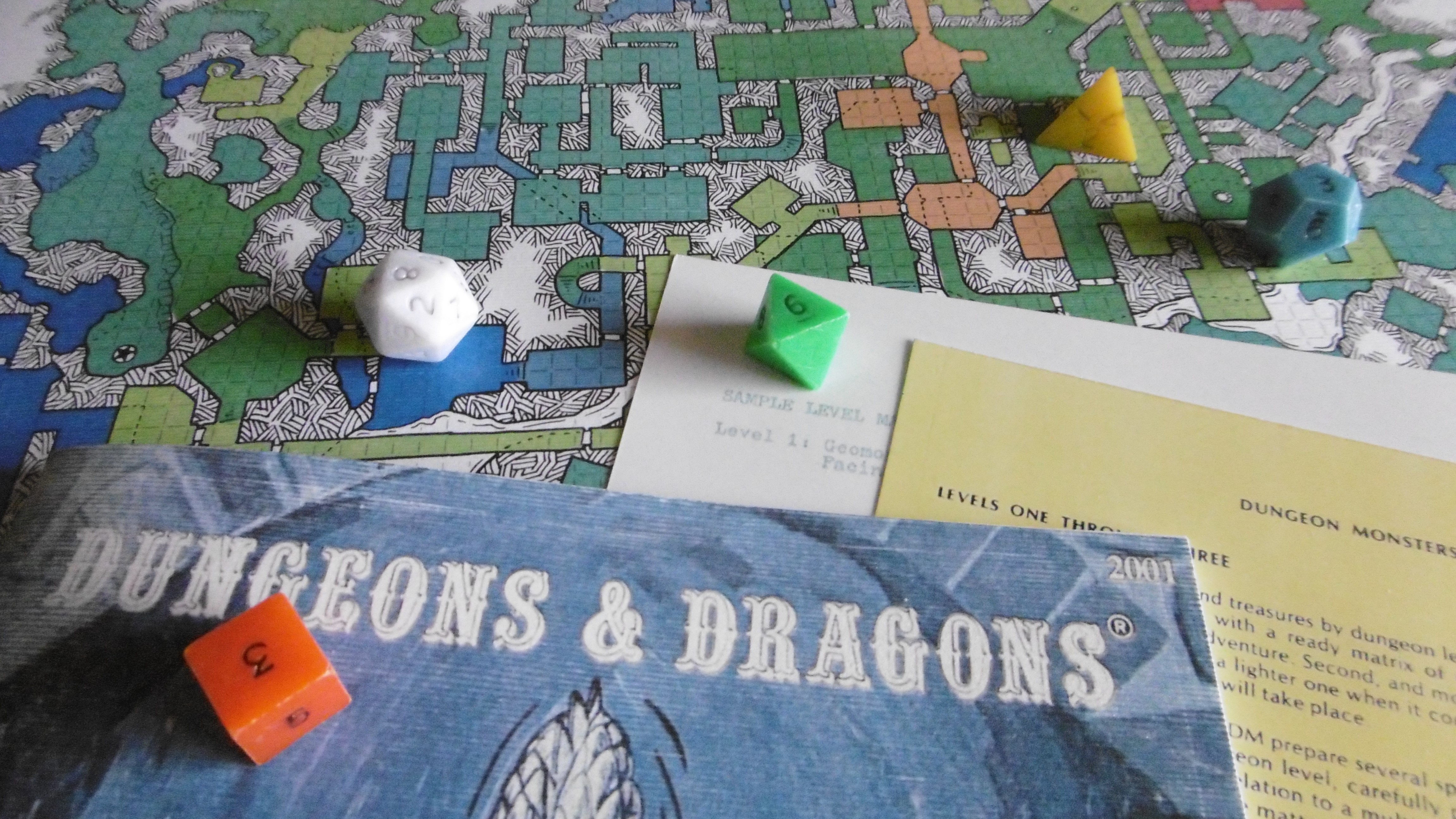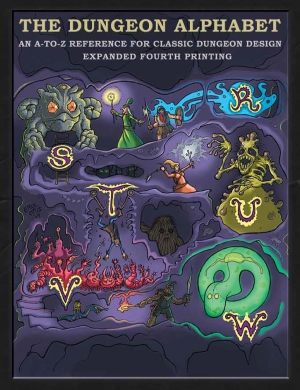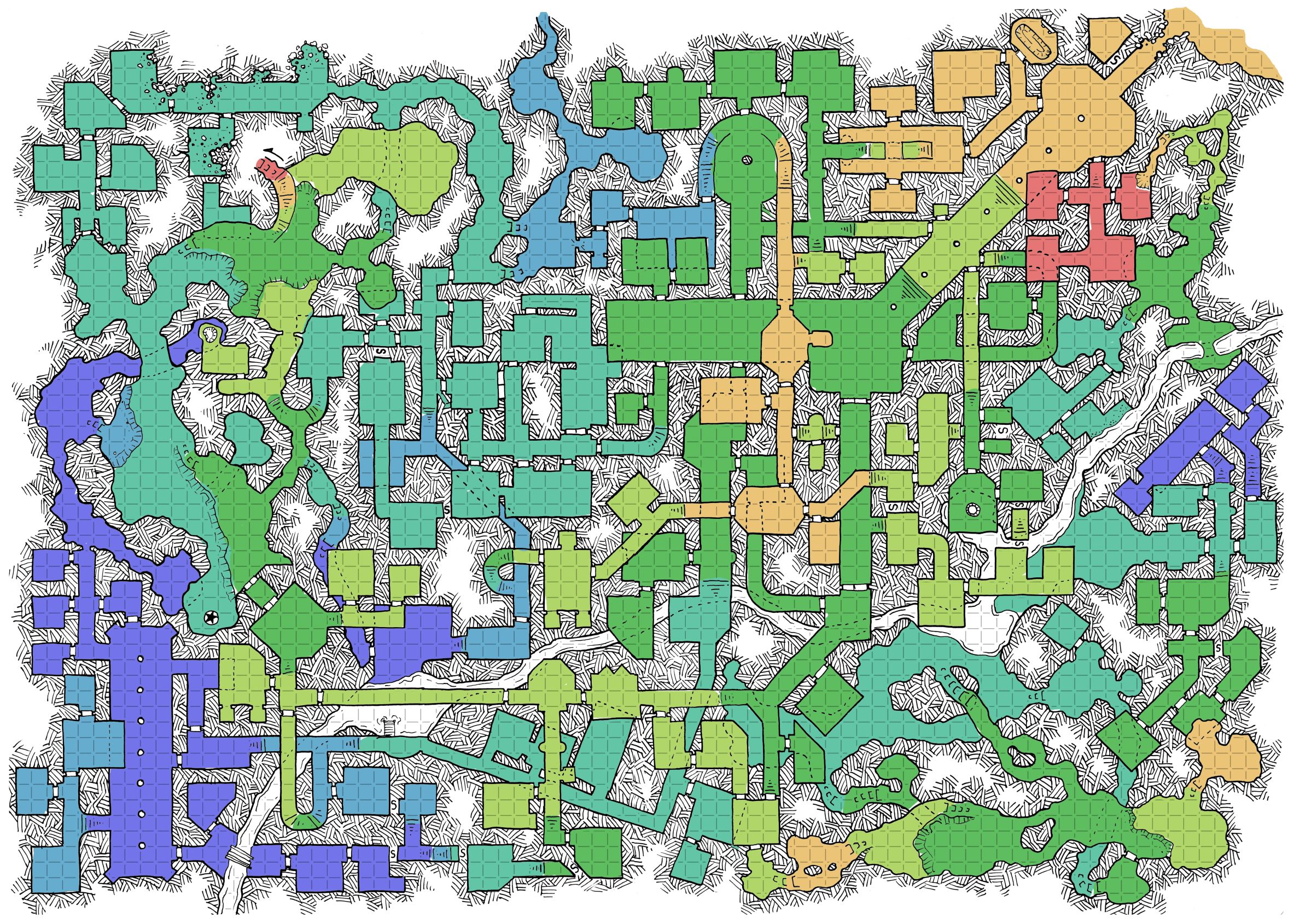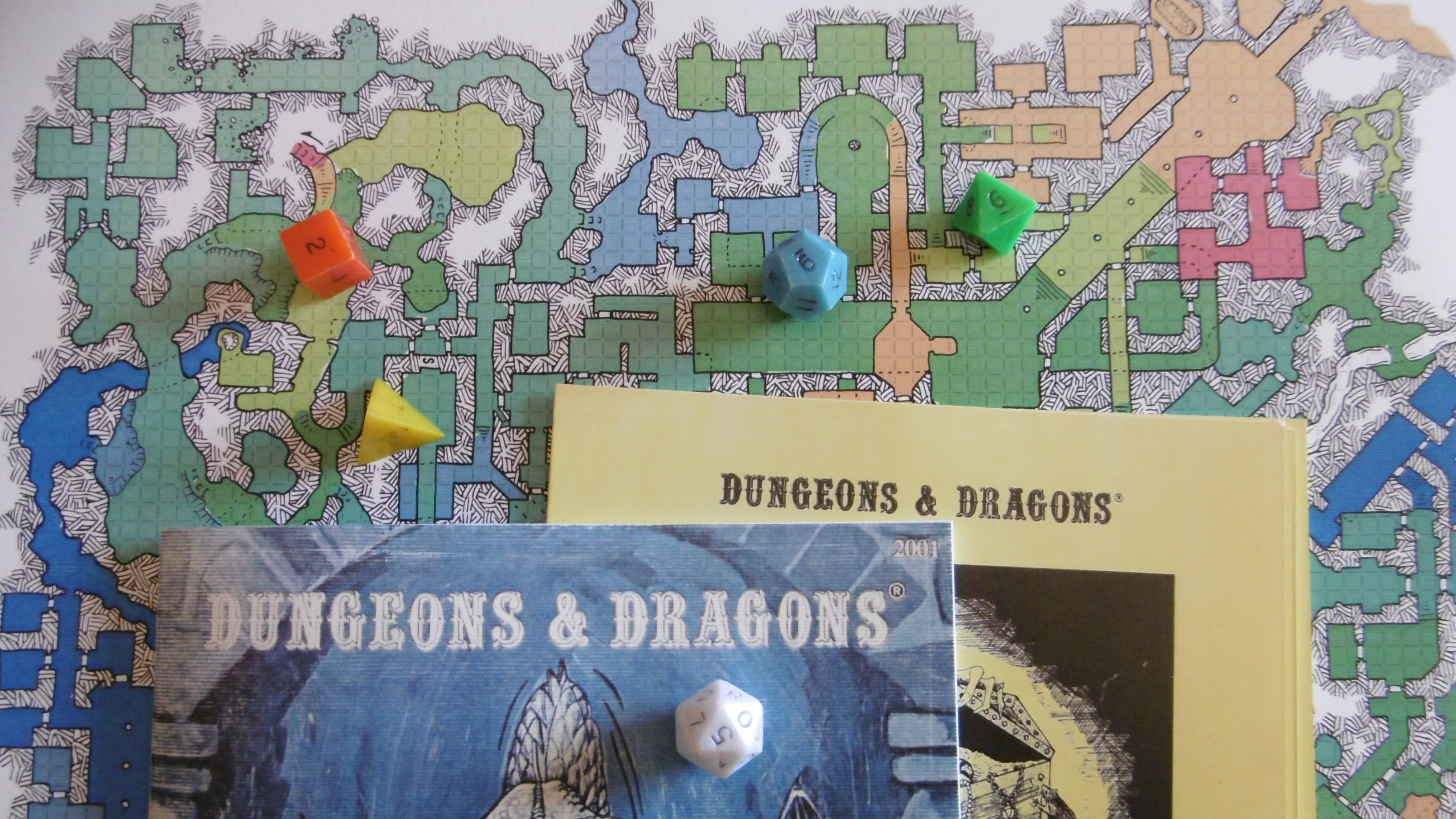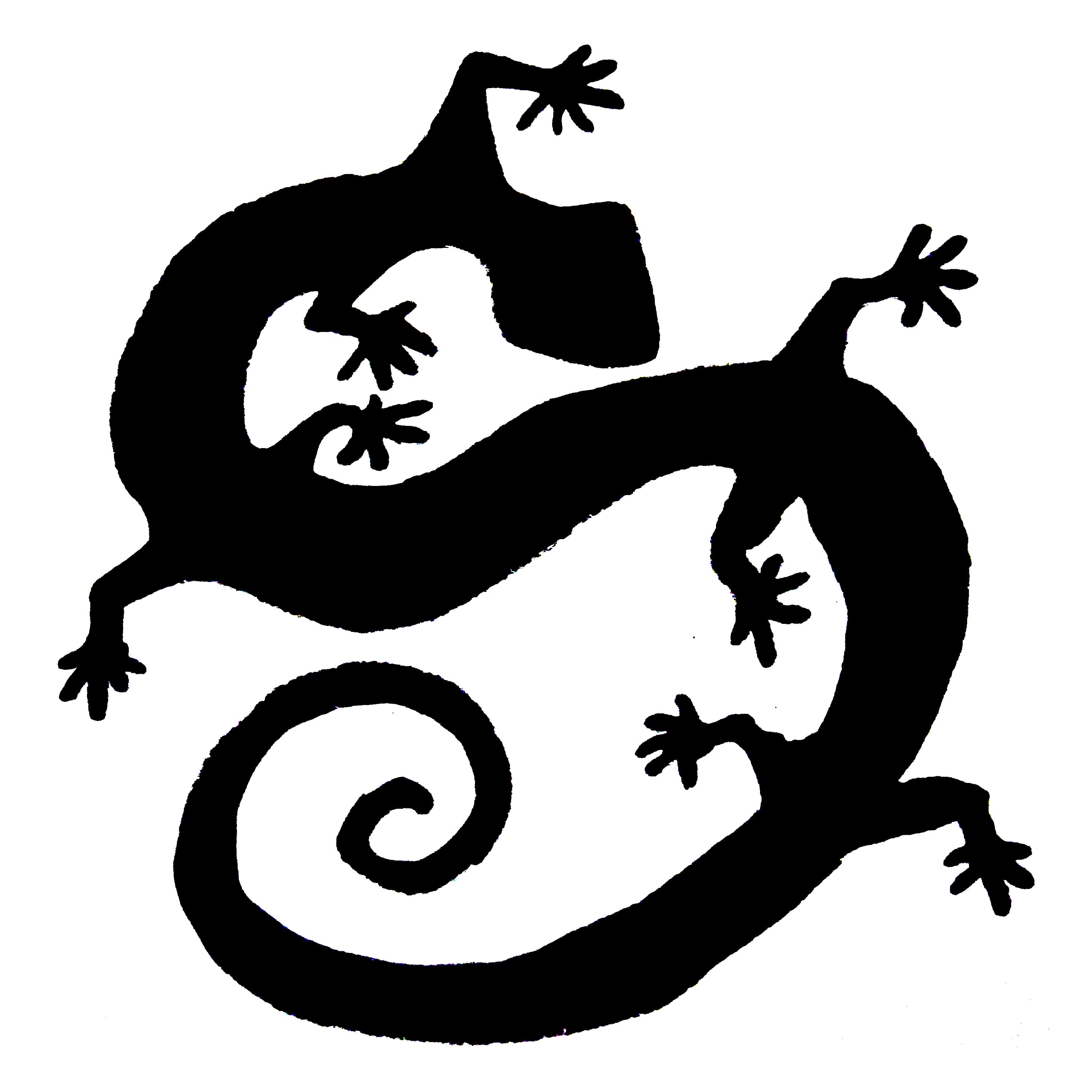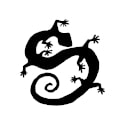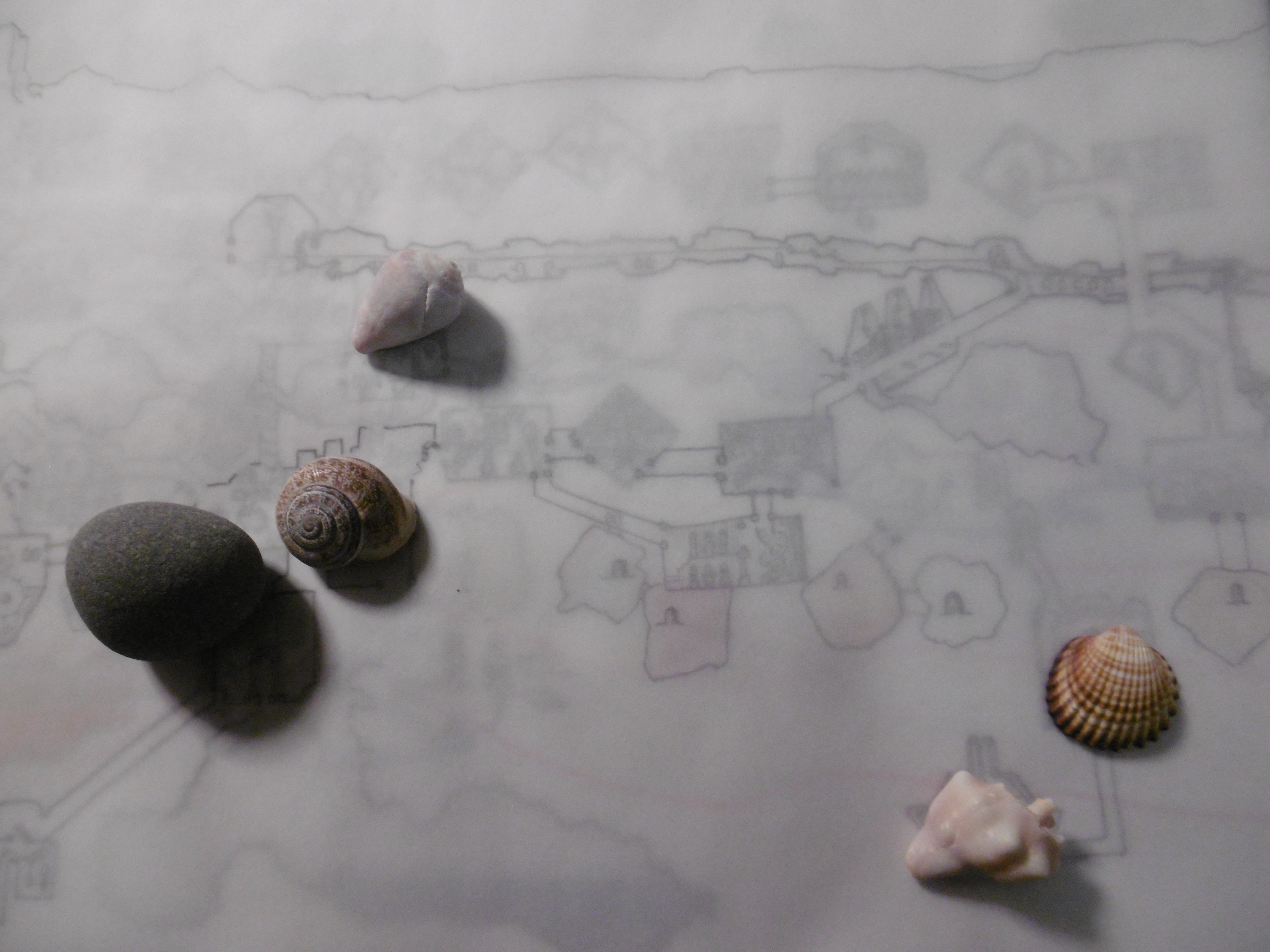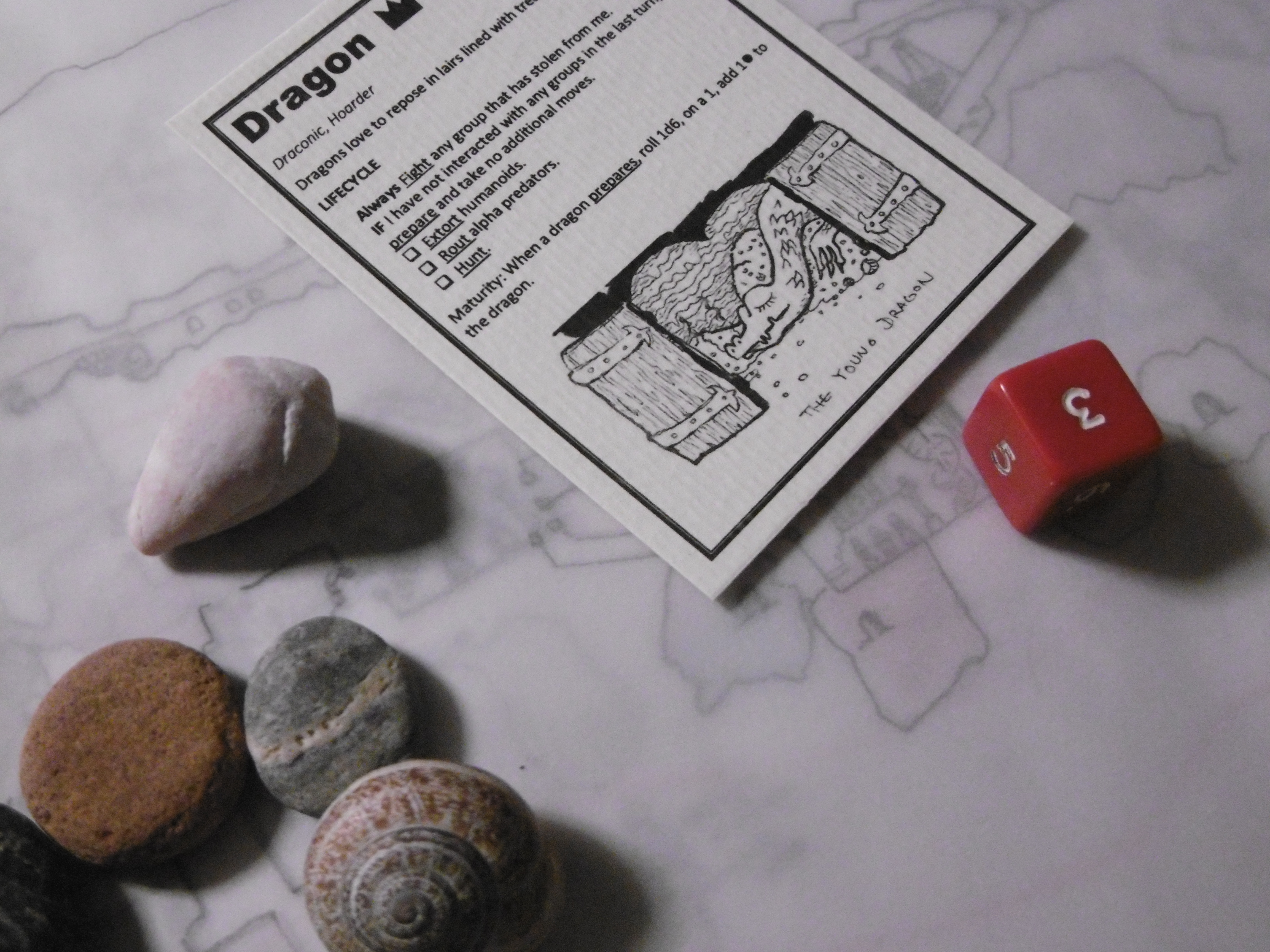Adjusting for Party Size
Previous experience-point calculations are based on a party of three. Larger or smaller parties must earn 2,171 XP—more or less—to advance an experience level.
I lead with a summary. Explanation and math follow. After a look at how a clever party of six makes up for fewer stocked XP per character, I close with examples.
Having been warned of the dungeon’s nature, we are not surprised when our Deep Halls explorations stray into uncertainty. “Twisted and nightmarish” as it is, we are thrilled at the risk.
Reading Map
Summary of Adjustments
- For each additional character above three:
- Add a single monster per encounter.
- Add one treasure roll for each double and single treasure.
- Do not add rolls to “half” treasures—those without monsters.
- For each character fewer than three:
Larger Parties
For parties over three, we add single monsters and treasure rolls to double and single treasures.
Monsters
According to Holmes (10), we add a single monster (not a roll) for each additional character. The average XP value for M&T’s Level One monsters is 25. Don’t ask.
(22 room + 8.5 wandering) × 25 XP = 762 additional XP from monsters
Thus, 30.5 additional monsters add 762 XP to the count.
Treasures
Subtracting the monsters XP from the total additional XP necessary, we need 1,409 more XP from treasures, which comes to ten treasure rolls.
2,171 − 762 = 1,409 additional XP needed from treasures
1,409 ÷ 143 g.p. = 9.85 rolls
Looking again at the pertinent factors of the familiar equation, no matter which treasure sequence we use, adding one roll to each magnitude—double, single, and half treasures, yields 15.5 additional rolls.
(5 areas × t) + (8 areas × t) + (2.5 areas × t) = 15.5t
In other words, since an average of 15.5 areas on Level 1 contain treasures, one more roll for each treasure adds 15.5 rolls to the total.
We want ten more rolls. We could add one to the single and half treasures for 10.5. It’s awkward, though, since the half treasures are not guarded by monsters, and the double treasures, guarded by double monsters, should be more impressive in comparison.
In these uncertain tunnels, I think it not too generous to add one roll each to double and single treasures for 13 additional treasure rolls. At the risk of having my “badge of honor” revoked, I suggest we leave half treasures unadjusted.
Smaller Parties
Adjusting for smaller parties is much the opposite of that for larger parties with minimum limits.
Monsters
Following Holmes’s “roughly equal numbers” advice for balanced encounters (10), we subtract a single monster from the encounter for parties of two and two monsters for lone adventures. Though Holmes stipulates that the number of monsters “should not be reduced below the lowest number shown” in the range.
Treasures
Reduce by one roll per character, for smaller parties, any treasures to which you would add one for larger parties. Do not reduce the number of rolls below the default sequence: 2-1-½.
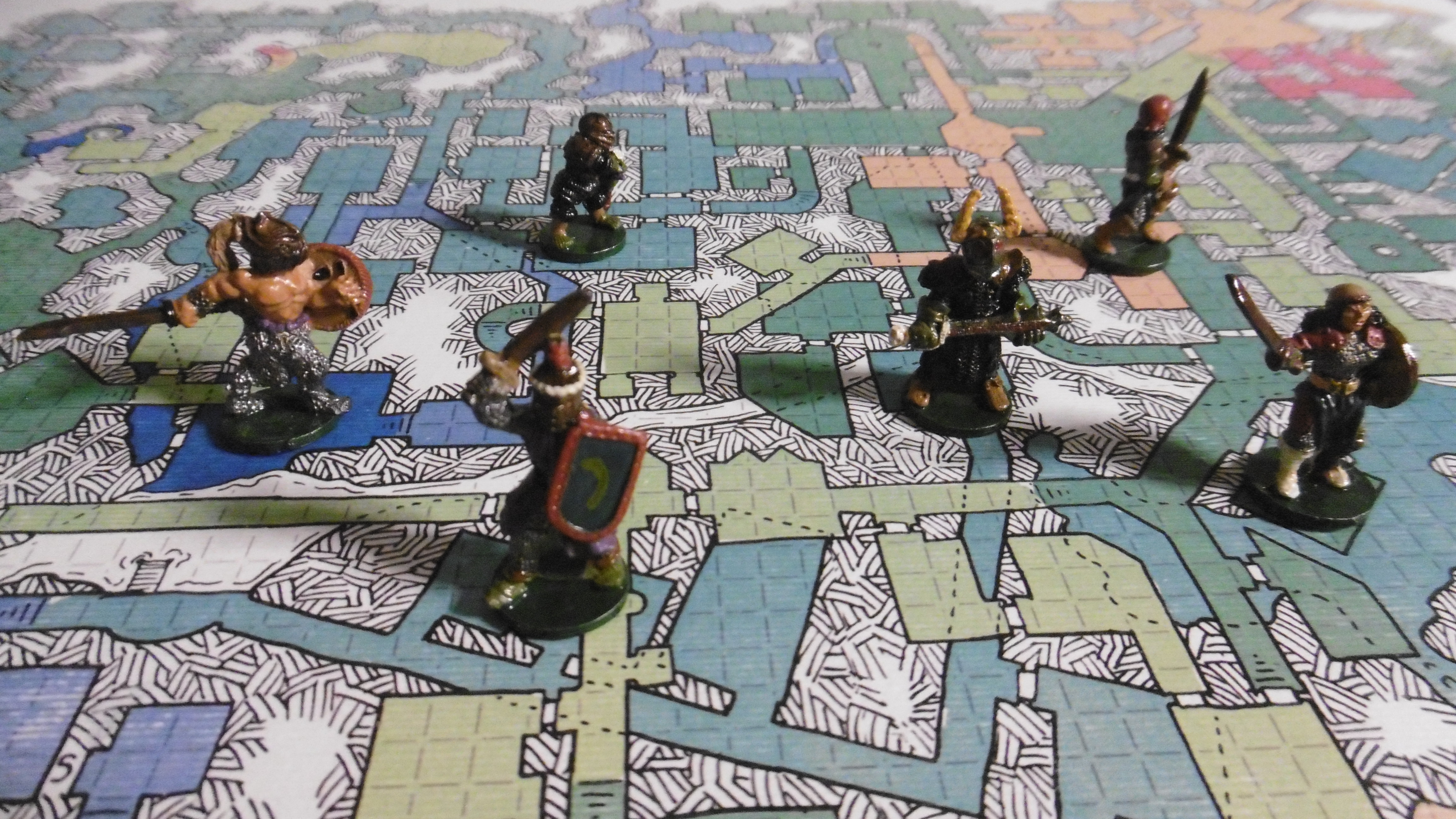
A Clever Party
We see in the example below of a party of six that more adventurers must earn a higher percentage of the stocked XP to advance. Despite the challenge, larger parties have several advantages over smaller.
Wider range of special capabilities: Of the four classes and three races with special capabilities, a party of three draws on, at most, five types: elf with fighting man and magic-user capabilities plus any two of cleric, thief, dwarf, and hobbit. A party of five can draw on all seven types, and six can double up on one or more.
More tactical options: A larger force, properly maneuvered, presents a wider front and blocks wider corridors. It can flank or surround the enemy, enabling more often a thief’s “deadly blow from behind.” Wounded characters can withdraw from melee, while more healthy companions close the breach. And magic-users are better protected.
More players: As additional party members might be non-player characters, a larger party doesn’t necessarily mean more players. But when more brains surround the table, they tend to generate more—and sometimes better—solutions to problems.
Examples
To give us an idea of how these additional treasure rolls effect survivability, let’s look at two examples, for a party of four and a party of six, each using different treasure sequences.
For example sake, we assume a clever party indeed, who defeats all the monsters and finds all the treasures.
Example: A Default Party of Four
Using the default treasure sequence from the Flying Dungeon Stocking Table, 2-1-½:
Where t equals one roll on the treasure table or 143 g.p.,
(5 areas × 2t) + (8 areas × t) + (2.5 areas × ½t) = 19.25t = 2,752 g.p.
We add one roll to double and single treasures for a party of four adventurers. The modified treasure sequence is 3-2-½:
Where t equals 143 g.p.,
(5 areas × 3t) + (8 areas × 2t) + (2.5 areas × ½t) = 32.25t = 4,611 g.p.
Adding XP for monsters and treasures, each of four characters earns 1,724 XP.
30.5 monsters × 75 = 2,287 XP for monsters
2,287 + 4,611 = 6,898 XP total
6,898 ÷ 4 characters = 1,724 XP each
While a party of three earns 1,425 XP each.
1,525 + 2,752 = 4,277 ÷ 3 characters = 1,425
Example: A Thrilling Party of Six
Using the thrilling sequence: 9-4-1.
Where t equals 143 g.p.,
(5 × 9t) + (8 × 4t) + (2.5 × t) = 79.5t = 11,368 g.p.
For a party of six, we add three rolls each to the double and single treasures. The sequence becomes 12-7-1
Where t equals 143 g.p.,
(5 × 12t) + (8 × 7t) + (2.5 × t) = 118.5t = 16,945 g.p.
Adding XP for monsters and treasures, dividing among six characters, each earns 3,459 XP.
30.5 monsters × 125 = 3,812 XP for monsters
3,812 + 16,945 = 20,757 XP total
20,757 ÷ 6 characters = 3,459 XP each
While a party of three, using the thrilling sequence, earns 4,297 XP each.
1,525 + 11,368 = 12,893 ÷ 3 characters = 4,297
The results show that, using the default treasure sequence, each member of a party of four earns 300 more XP than members of a party of three. While in a party of six, using the thrilling sequence, each member earns 838 fewer XP than if they were only three. Twisted and nightmarish.
